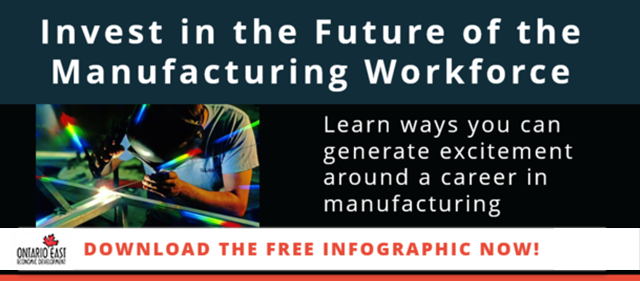In the Workforce Development Board’s (WDC) recent report titled “Building Bridges, Breaking Barriers”, the 2012 employment rate of Canadians aged 25-64 with disabilities was just 49%, which was 30% lower than those without a disability.
12% of respondents with a disability said that they had been refused a job in the previous five years as a result. Additionally, 33% of 25-34-year-olds with a severe or very severe disability reported that they were also refused job opportunities.
The stigma surrounding disabilities continues to hurt both people with disabilities, especially for those that suffer from invisible disabilities related to mental health, and the workforces they seek to enter. By working to overcome the stigma and making accommodations for those with disabilities, you can open up your hiring to a much larger potential labour force.
Hiring People with Disabilities in Manufacturing
Improving accessibility is good for business. Over 1.9 million residents of Ontario have a disability, which equates to one in seven people. According to the provincial government, over the next two decades, 40% of the Ontario customer base will have disabilities. According to Ontario’s Accessibility Plan, improving accessibility will result in up to $9.6 billion in new retail spending and $1.6 billion in new tourism spending over five years.
Making your business accessible both for customers and employees isn’t just the right thing to do, it’s the smart thing to do.
In the next five years, manufacturing is going to experience a labour shortage. Employers, like you, are going to need to start expanding the labour market by tapping into previously underutilized skilled workers. Hiring people with disabilities will require taking a second look and improving on the following recruitment processes:
- Promote accessibility in current job postings, interviews, and training
- Eliminate hiring requirements that aren’t necessary (e.g., G license), when reliable transportation will suffice
- Provide options for interviewees, such as one-on-one or panel sessions
- Develop training packages in different mediums (e.g. videos and written communications)
By providing options and eliminating barriers to the hiring process, you’ll be opening up employment to a new segment of the workforce.
Diversity and inclusion of different viewpoints, skills, and experiences leads to not only a more representative workforce, but one that is better able to provide new solutions and fresh approaches to your business.
The Small Cost of Accommodations
The WDB’s report pointed out that accommodating for the needs of people with disabilities was one of the most common human rights violations in the workplace. Hiring should be based on merit alone, and without accommodations, you’re eliminating skilled workers from your hiring pool.
The WDB report also found the actual cost required to accommodate a person with disabilities was typically less than $500, and in 20% of the cases didn’t cost a penny, because it would be covered by the government. By doing a little research, and investigating the costs (and possible funding for the same) to eliminate barriers, you’ll be able to provide employment to many more people in the future.
Removing Barriers to Invest in the Future Workforce
To address the upcoming labour shortage, consider removing barriers to hiring people with disabilities. From changing a few recruitment processes to investing in relatively inexpensive accommodations in the workplace, you’ll be opening doors to a much larger labour pool.
To learn about other ways you can invest in the future of manufacturing, download this infographic now:
External links are provided as informational resources only and are not necessarily endorsed by Ontario East.
References:
https://www.ontario.ca/page/path-2025-ontarios-accessibility-action-plan
.png)

